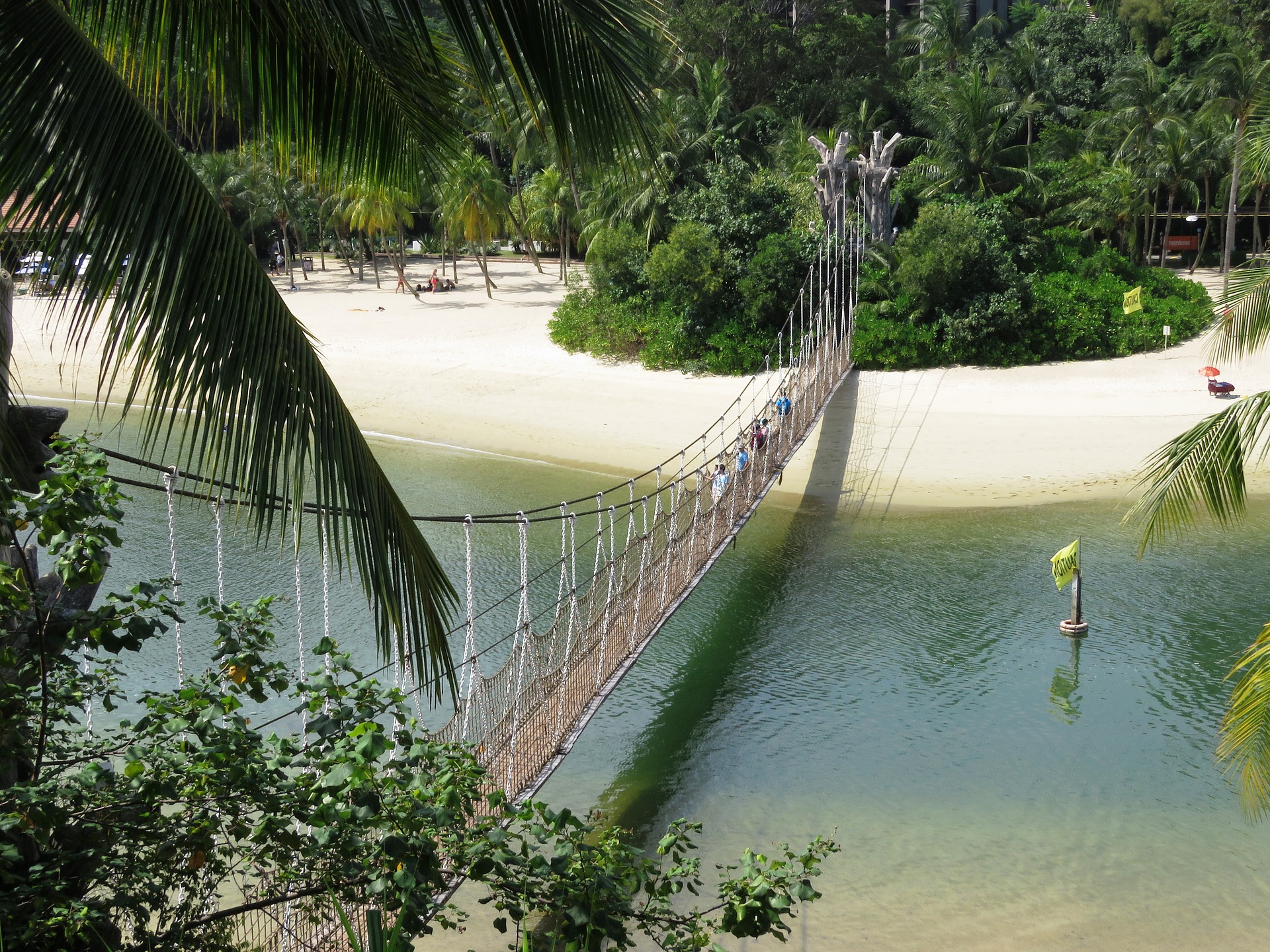Sea levels in Singapore 14cm above pre-1970 levels: Meteorological Service Singapore
新加坡气象署最新发布的2019年常年气候评估报告显示,我国目前平均海平面高度较1970年的水平上升多达14厘米。
设在我国南部莱佛士灯塔的测潮仪(tide gauge),更是测得该地的海平面每年上升约3.55毫米。气象署回复《联合早报》询问时表示,在综合三巴旺、苏丹浅滩和莱佛士灯塔三处测潮仪数据后得出,自1970年代以来,我国平均海平面以每年2.8毫米的速度不断上升。
海水受热膨胀是20世纪海平面上升的主因。报告指出,那期间全球海平面以每年1.2毫米到1.9毫米的速度上升,“随着格陵兰岛和南极洲冰盖融化或坍塌,海平面上升的可能性或更高,且上升速度可能更快。”
报告指出,自1993年测量海平面的高精度卫星测高记录启用以来,全球平均海平面每年以约3.24毫米的速度上升,并在去年达到最高水平,比1993年的水平高约90毫米。
“加上热浪、洪水、旱灾、旋风等极端情况,海平面上升是气候变化的最严重影响之一,尤其是对人口众多的低洼沿海地区和岛屿国家构成重大威胁。”
当中原因是,海平面上升幅度并不均匀,且会在不同时间范围内发生变化,使得某些地区的海平面趋势明显偏离全球平均值。
我国三分一地区海拔高出平均海平面不到五米
我国多达三分之一地区的海拔高出平均海平面不到五米。气象署发言人解释,海洋动力学、当地陆地运动和重力变化等各种因素,决定当地海平面变化率与全球平均水平的差异。例如,由于冰盖融化引起的两极引力减弱,格陵兰岛和南极冰盖周围的海平面下降,海水反而会被吸向赤道地区,导致赤道地区如新加坡的海平面比其他地区高出三成。
到了2100年,全球海平面上升幅度或达一米。过去百年一遇的极端海平面水平,预计将在本世纪连年出现。
李显龙总理去年在国庆群众大会重点提及,政府预计未来100年投入1000亿元应对海平面上升构成的威胁。副总理兼财政部长王瑞杰上月宣布将成立启动资金为50亿元的海岸及洪水防护基金。肩负全国海岸保护机构重任的公用事业局今年起将对沿岸高危区展开深入研究,以制定长期保护策略。
气象署发言人说,我国海平面上升速率受垂直陆地运动(vertical land movement)等不同因素影响,“新加坡气候研究中心将与本地大学及政府机构合作,增进我们对本地垂直陆地运动的了解”。
此次报告也凸显持续投资测潮仪等观测网络的必要,以“了解新加坡潜在的海平面上升趋势,为决策者提供应对海岸变化的宝贵信息。”
As the world warms and ice caps melt, global sea levels are rising, including around Singapore.
The average sea level around the island today is 14cm above pre-1970 levels, said the Meteorological Service Singapore (MSS) yesterday in its annual climate assessment report.
“Warming oceans cause sea level to rise,” said the MSS report. Water expands when heated, and this contributes to sea level rise. “Similarly, melting of glaciers, Greenland and Antarctica ice sheets ultimately reach the ocean, thus further increasing sea level,” it added.
Data from tide gauges has shown that global sea level has been rising at a rate of 1.2mm to 1.9mm a year in the 20th century, the report noted.
The thermal expansion of water was the main driver of sea level rise in the 20th century, said sea level rise expert Benjamin Horton from the Nanyang Technological University. But accelerating rates of ice melt from the world’s ice sheets were exacerbating the situation in the 21st century, he added.
MSS said that since 1993, when high-precision satellite data was available for sea level monitoring, the global average sea level rose at a rate of about 3.24mm per year. Sea levels reached about 90mm above the 1993 level – the highest recorded so far – last year, noted the MSS report.
Prof Horton said: “If all of Greenland is melted, it will contribute 6m to sea level rise.” But the impact is much greater for Antarctica, he added – if the Antarctic Ice Sheet melts completely, sea levels could go up by about 60m.
The MSS report follows another released by the United Nations climate science body last September, which also found that if warming continued unabated, sea levels may rise by several metres in the centuries ahead. Earlier estimates had said sea levels could rise by about 1m by 2100.
The study of how sea levels can impact coastlines is a complex one. For one, sea level rise is not uniform, but varies regionally and at different time scales.
Singapore, for example, might experience higher rates of sea level rise than the global mean, said Prof Horton. “If an ice sheet melts, its gravitational attraction decreases and sea levels around it can go down,” explains Prof Horton.”Conversely, regions far from a melting ice sheet, such as Singapore, will see a rise in sea level greater than the global average.”
Sea levels can also vary over shorter periods.
For example, during the north-east monsoon – usually the region’s rainy season for the year – sea levels can rise by up to 0.2m, said MSS.
Sea levels can also vary during the occurrence of natural climate phenomena, such as El Nino events, which can occur every two to seven years. The last major El Nino event occurred in 2015.
The MSS said it is studying how sea levels around Singapore were affected by the 2015 El Nino event, as well as the positive phase of the Indian Ocean Dipole – another climate phenomenon similar to El Nino, but centred on the Indian Ocean – which occurred last year.
“This is currently being studied and will be part of a soon-to-be published journal paper,” said the MSS spokesman, adding that more details will be released later.
Singapore, as a low-lying nation with about 30 per cent of the island less than 5m above the mean sea level, is well-aware of its vulnerability to sea level rise and is taking steps to mitigate the impact.
Last August, Prime Minister Lee Hsien Loong said Singapore would need to spend $100 billion over the long term to buffer its coast from the rising tides. Last month, Deputy Prime Minister Heng Swee Keat said Singapore’s new coastal and flood protection fund will get its first injection of $5 billion.
Scientific research is also ongoing. The MSS spokesman: “The National Sea Level Programme will use this information to better understand the sea level variability. This is crucial in order to better assess future projections of sea level rise, since the long-term trends are superimposed onto this variability.”
Source: Zaobao / The Straits Times





